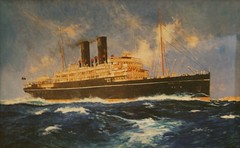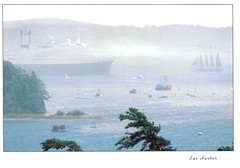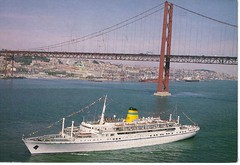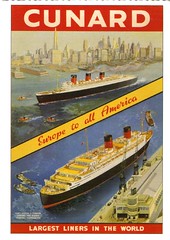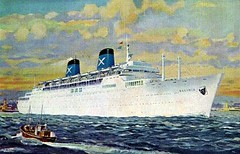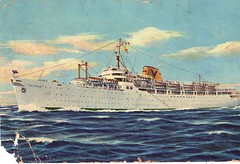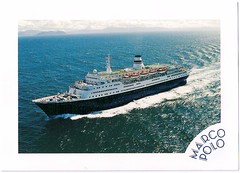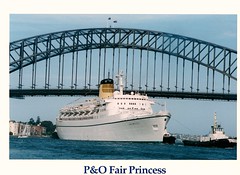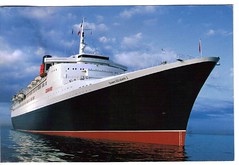Postcards from CruiseCritic friend Lesley. Thanks Lesley!
Chandris liner Ellinis circa 1971.
This one makes a lovely match to another postcard I have of Ellinis here: https://blog.neilennis.com/index.php/arriving-in-oz/
The “X” on the funnels is a greek “Chi” and stands for “Chandris” – she was part of the Chandris line.
This was the ship that my family migrated to Australia aboard in 1965. She carried many migrants to Australia in her time.
Built in 1932, she was originally named “Lurline” of the Matson line, and had distinguished herself during WW2 serving as a troop carrier, and was fortunate to have left Pearl Harbour in 1941 about 3 days prior to the Japanese attack.
Former Australian PM John Curtin sailed on her as part of a voyage to meet with President Roosevelt.
She was scrapped in the 1980’s and parts of her were cannibalized for use on “Britanis” another Chandris ship.
She may not be as pretty as some of the more modern ships, but with a history of over 50 years she touched the lives of many people who, todoay, would probably never have had the chance to cruise.
Sitmar liner Fairsea.
You can read a more detailed history of Sitmar ships here: http://www.prijt-priet.nl/htm/fairsea.htm
Fairsea was built in 1941, and originally named “Rio de la Plato”. She was taken over by the Royal Navy in 1941, renamed “HMS Charger” and fitted out as an aircraft carrier. She was later handed over to the US Navy who renamed her “USS Charger” after which she spent most of her war service in the Pacific.
Purchased by Alvion Steam Ship Corporation in 1949, she was converted into a Passenger Liner, and renamed “Fairsea”, and operated as a Passenger Liner and Cruise Ship until 1969 when she was eventually broken up for scrap.

